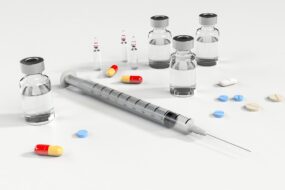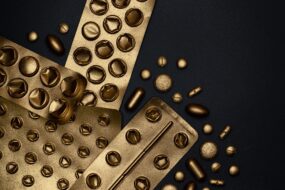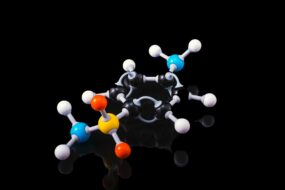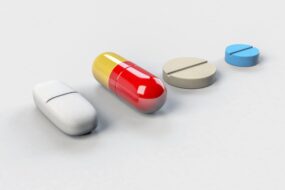Heparin is a non-uniform mixture of straight-chain mucopolysaccharides with a molecular weight of 10,000 to 20,000.
It has polymers of two sulfated disaccharide units:
- D-glucosamine-Liduronic acid
- D-glucosamine-D-glucuronic acid
Heparin is present in all tissues of the body containing mast cells; i.e.:
lung, liver, and intestinal mucosa.
Mechanism of action.
It is an anticoagulant whose action at :
· Lower dose: Inactivates factor Xa and inhibits the conversion of prothrombin to thrombin.
· Higher dose: Inactivates factors IX, X, XI, and XII and thrombin and inhibits the conversion of fibrinogen to fibrin.
· Also inhibits activation of factor VIII In the body.
Clinical uses.
· Acute coronary syndrome: STEMI and unstable angina.
· Anticoagulation.
· Catheter patency.
Adverse effects.
- Bleeding due to overdose.
- Osteoporosis results from long-term use of relatively high doses.
- Hypersensitivity reactions; urticaria, rigor, fever, and anaphylaxis.
- Haematuria occurs.
- Thrombocytopenia: mild and transient; due to aggregation of platelets.
- Temporary and reversible alopecia is infrequent.
Contraindications.
- Bleeding disorders and history of heparin-induced thrombocytopenia.
- Ocular and neurosurgery, lumbar puncture.
- Chronic alcoholics, cirrhosis, renal failure.
- Severe hypertension due to the risk of a cerebral hemorrhage.
- Subacute bacterial endocarditis due to risk of embolism.
- Tuberculosis due to the risk of hemoptysis.
- Aspirin and other antiplatelet drugs should be used very cautiously during heparin therapy.
Drug interactions.
- Increased risk of bleeding when administered with ibuprofen, diclofenac, warfarin, and clopidogrel.












